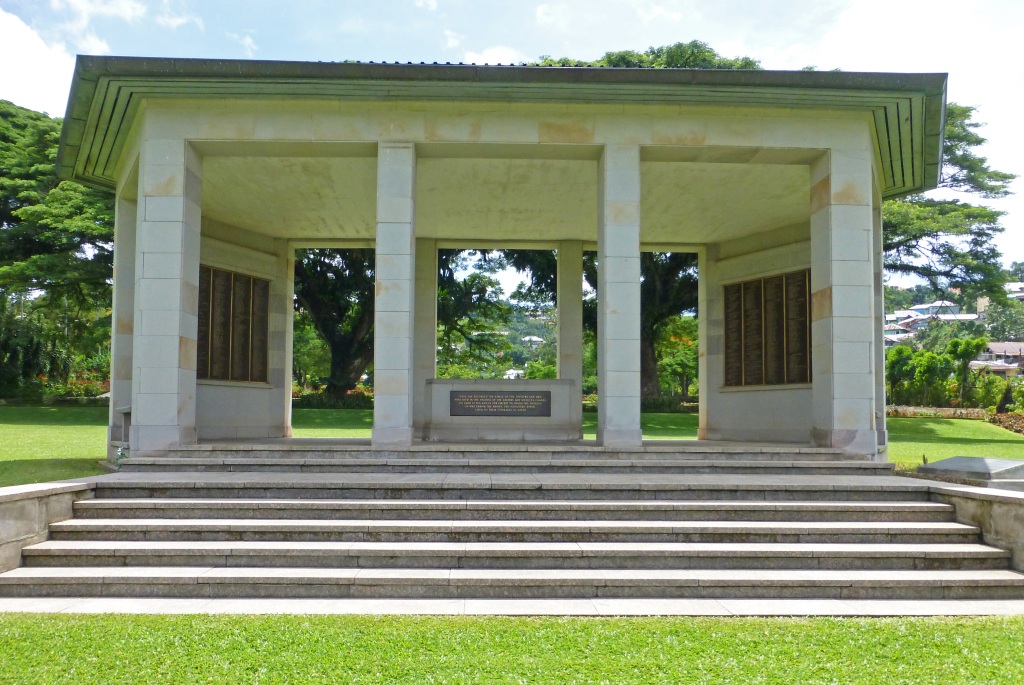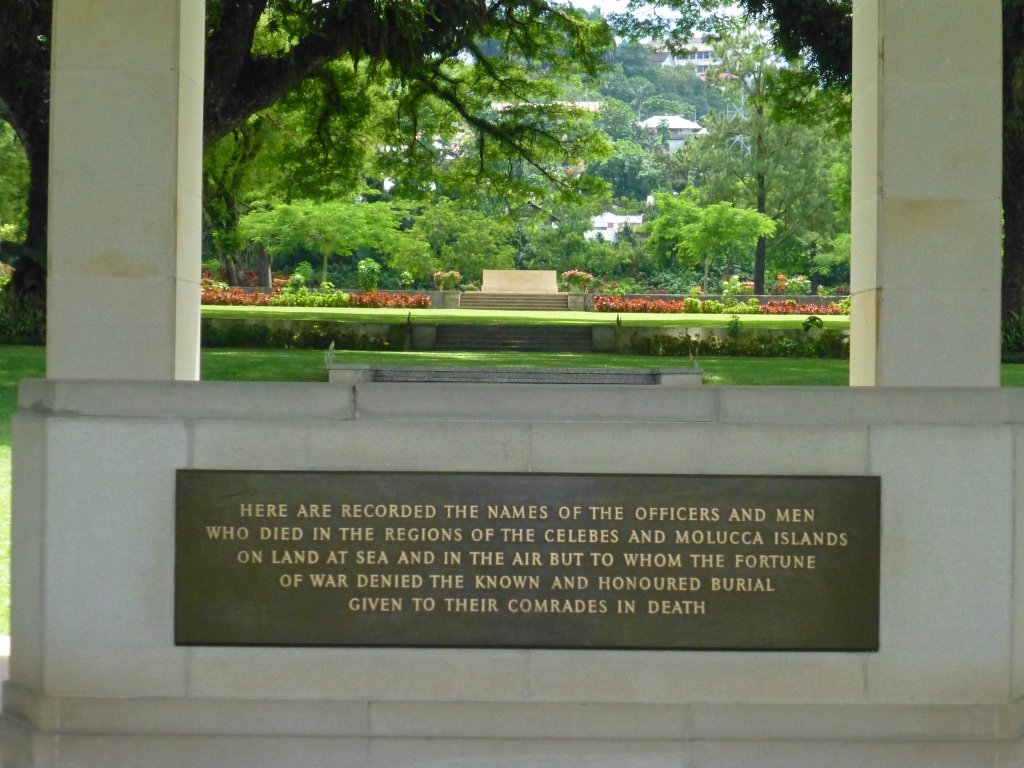Ambon Memorial
- Country Indonesia
- Total identified casualties 445 Find these casualties
- Identified casualties from Second World War
- GPS Coordinates Latitude: -3.67482, Longitude: 128.19188
Location information
Ambon Island lies close to the south west coast of Ceram in the Molucca Group of Islands. It is reached by air from Jakarta with connecting flights at Makassar in South Sulawesi.
The Ambon Memorial, which is in the form of a shelter, stands on the first terrace in Ambon War Cemetery (known locally as the Australian Cemetery), which is on the opposite side of the bay to the airport.
It can be reached by taxi travelling around the bay to Ambon town or there is a ferry service across the bay which brings you to Ambon town. The cemetery lies 5 kilometres north-east of Ambon on the main road to Galala.
The Memorial stands on a lawn terrace at the front of the cemetery and is approached by a broad flight of steps on the central drive leading from the entrance gates. It is in the form of a shelter building with the roof supported on columns and with bronze name panels affixed to the inside walls. In the centre of the building a low altar-like stone contains the Register box and bears a bronze panel with the following inscription:
1939 - 1945 HERE ARE RECORDED THE NAMES OF OFFICERS AND MEN WHO DIED IN THE REGIONS OF THE CELEBES AND MOLUCCA ISLANDS ON LAND AT SEA AND IN THE AIR BUT TO WHOM THE FORTUNE OF WAR DENIED THE KNOWN AND HONOURED BURIAL GIVEN TO THEIR COMRADES IN DEATH.
Visiting information
PARKING
There is a car park at the cemetery with space for several vehicles. There is no alternative parking near to the cemetery.
ACCESS, LAYOUT AND MAIN ENTRANCE
The cemetery has four stepped grass terraces that separate the cemetery into four levels. Each separate terrace has a unique design and function. Entrance to the cemetery from the parking area opens onto the first level of the terraces and is accessed via a concrete pathway approximately 750 mm wide. On the first level is a memorial shelter. The cemetery Register Box is below a stone table in the centre of the memorial shelter. There are steps up into the shelter.
The second terrace is reached by climbing stone steps or by using a stone ramp. The second terrace opens onto an area with two pergolas, within each pergola is a stone bench seating area. The second terrace is the location of the Indian Section and burial plot.
The third terrace is accessed by either stone steps or a stone ramp and is the second of the burial plots.
The fourth terrace is accessed by stone steps or a ramp and is the final burial plot in the cemetery. The Stone of Remembrance is in the centre of the final terrace.
There is seating inside the Memorial Shelter and under pergolas in the cemetery. All seating areas offer some shade for visitors.
ALTERNATIVE ACCESS
There is no alternative access to the cemetery.
ADDITIONAL INFORMATION
Ambon War Cemetery is permanently open - If the gates to the Cemetery are locked entry can be made through the side entrance adjacent to the main gate. A notice to this effect is situated inside the main cemetery gates.
THOSE WISHING TO VISIT AMBON WAR CEMETERY SHOULD CHECK THE LATEST FOREIGN AND COMMONWEALTH OFFICE GUIDANCE ON TRAVEL TO THE AREA ON:
www.fco.gov.uk
History information
The town of Ambon, situated on Laitimor Peninsula on the southern shore of Ambon Bay, was severely damaged during the war, first by the Japanese who bombed it heavily in January 1942 and later by the Allied forces who attacked it in 1943 and 1944.
The Ambon Memorial was constructed on the site of a former prisoner of war camp, and commemorates 442 officers and men of the Australian forces who have no known grave. Of these, nearly 300 belonged to the Australian Army and over 150 to the Royal Australian Air Force; they lost their lives in Ambonia, in other islands of the Molucca group and in Celebes. Many of those commemorated here died in the defence of Ambonia in the early months of the war against Japan and others were killed in the Allied assault on Japanese air bases established on Ambonia and Celebes. A large number perished in Japanese prisoner of war camps.



